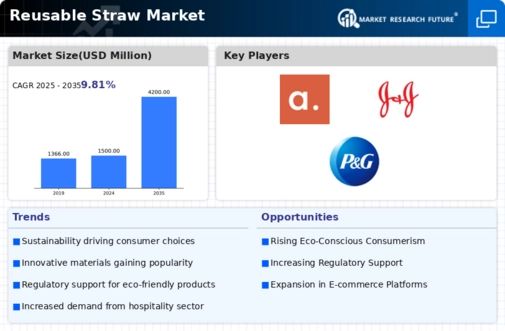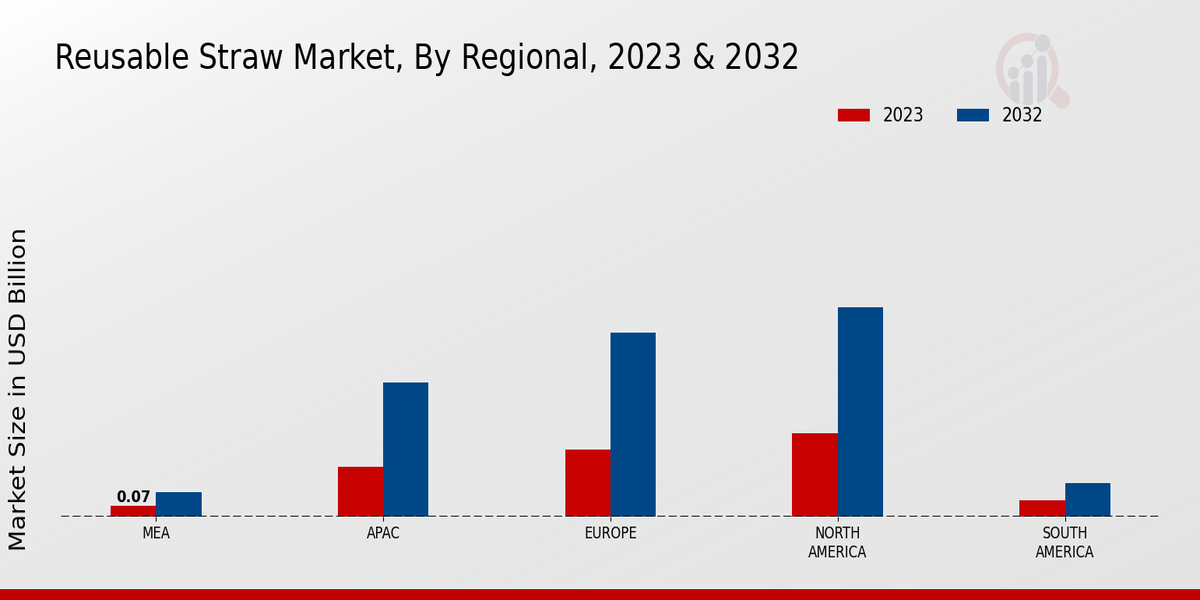Market Growth Projections
The Global Reusable Straw Market Industry is poised for substantial growth, with projections indicating a market size of 1500 USD Million in 2024 and an anticipated increase to 4200 USD Million by 2035. This growth trajectory suggests a compound annual growth rate (CAGR) of 9.81% from 2025 to 2035. Such projections reflect the increasing consumer demand for sustainable alternatives to single-use plastics, driven by environmental awareness and regulatory support. The market's expansion is likely to be fueled by ongoing innovations in product design and the rising popularity of eco-friendly brands, positioning reusable straws as a viable solution in the fight against plastic pollution.
Health and Safety Concerns
The rising awareness of health and safety issues associated with single-use plastics contributes to the growth of the Global Reusable Straw Market Industry. Concerns about chemical leaching from plastic straws into beverages have prompted consumers to seek safer alternatives. Reusable straws, particularly those made from stainless steel or glass, are perceived as healthier options. This trend is particularly evident in the food and beverage sector, where establishments are increasingly adopting reusable straws to enhance their brand image and appeal to health-conscious consumers. The market's expansion is indicative of a broader shift towards safer, more sustainable consumption practices.
Innovation in Product Design
Innovation plays a crucial role in the Global Reusable Straw Market Industry, as manufacturers continuously develop new designs and materials to meet consumer preferences. The introduction of collapsible straws, multi-functional designs, and customizable options has broadened the appeal of reusable straws. These innovations not only enhance user convenience but also cater to diverse consumer needs, such as portability and ease of cleaning. As a result, the market is experiencing a surge in demand, with projections indicating a growth trajectory that aligns with the increasing consumer inclination towards personalized and functional products.
Growing Environmental Awareness
The increasing global consciousness regarding environmental sustainability drives the Global Reusable Straw Market Industry. Consumers are becoming more aware of the detrimental effects of single-use plastics on ecosystems and marine life. This awareness has led to a shift in consumer preferences towards eco-friendly alternatives, such as reusable straws made from materials like stainless steel, silicone, and bamboo. As a result, the market is projected to reach 1500 USD Million in 2024, reflecting a significant demand for sustainable products. Governments worldwide are also implementing regulations to reduce plastic waste, further bolstering the market for reusable straws.
Regulatory Support and Initiatives
Government initiatives aimed at reducing plastic waste are pivotal in shaping the Global Reusable Straw Market Industry. Many countries are enacting bans on single-use plastics, which encourages consumers and businesses to adopt reusable alternatives. For instance, the European Union has set ambitious targets to reduce plastic consumption, which has led to increased investments in sustainable product development. This regulatory support not only enhances market growth but also fosters innovation in the design and functionality of reusable straws. As the market evolves, it is anticipated to grow at a CAGR of 9.81% from 2025 to 2035, reaching an estimated 4200 USD Million by 2035.
Market Penetration of Eco-Friendly Brands
The rise of eco-friendly brands significantly influences the Global Reusable Straw Market Industry. Many companies are now prioritizing sustainability in their product offerings, leading to a proliferation of reusable straw options in the market. This trend is particularly pronounced among younger consumers who are more inclined to support brands that align with their values. The competitive landscape is evolving, with brands leveraging sustainability as a key differentiator. This shift not only enhances market visibility but also drives consumer loyalty, contributing to the overall growth of the reusable straw market.















Leave a Comment